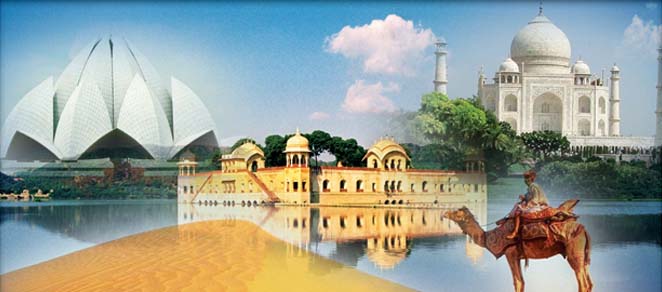
Road trips with ITC Hotels
by By N. Lothungbeni Humtsoe / 12 December 2020
New Delhi, Dec 11 (IANSlife) For Delhiites weekend getaways and road trips may not involve the sandy beaches of Goa, but with Jaipur and Agra less than a 300 km drive away, there's a lot to explore.
Jaipur one of the biggest city of Rajasthan offers history, tradition and shopping. With stunning palaces, museums and and many homegrown Indian brands, a two-day getaway just isn't enough. They also have traditional textiles, memorable camel rides and experience traditional folk dance and musical performances from the artistes.
If you have not yet seen the Taj Mahal now might be the best time, with tourism at an all time low, you avoid all the crowds usually expected at this wonder of the world. Located in Uttar Pradesh, It goes without saying, besides being known for its ivory-white Taj Mahal the Agra Fort and Fatehpur Sikri, all of which are UNESCO World Heritage offer a great lesson in history.
To make the journey safe and worry free, checkin at the ITC Hotels in both cities; the properties are offering some of the best deal for an extravagant weekend indulgence! One such offer is the '100?ck' deal where the hotel matches your spend and doubles your joy! The ITC Rajputana, Jaipur offers the full amount you spend as hotel credits which you can instantly redeem during your stay. Enjoy responsible luxury experiences including delectable food and beverage offerings, soothing spa treatments and a lot more. This exciting offer is valid on weekdays and weekends, available across 15+ #ITCHotels and Welcomhotels at over 10 destinations across India. Curating immersive luxury experiences and world-class hospitality strengthened by their #WeAssure program, a one-of-a-kind safety and well-being initiative, ensuring peace of mind and well-being during your stay.
(N. Lothungbeni Humtsoe can be contacted at lothungbeni.h@ians.in)

Flight of fancy
by Opinion Express / 19 September 2020Aerial sightseeing has become very popular as several nations still have travel restrictions on incoming arrivals
It began with some intrepid folks chartering planes to fly around. Then airlines such as Singapore Airlines and Australia’s Qantas caught wind of the idea and ran with it. What are we talking about? The concept of “flights to nowhere in particular” seems to have taken off, literally. Qantas’ recent trip, involving low-flying, aerial survey of the Great Barrier Reef, was sold out. Airlines are happy as this allows them to fly their aircraft relatively full, thus keeping some jobs safe and their expensive assets, the planes themselves, flying. Of course, scenic flights that operate in and out of the same airport are not a new concept. Qantas itself has run seasonal flights to Antarctica for several years every southern summer. But 2020, as we all know, is not like any other year, with several nations still putting travel restrictions on incoming arrivals, some not even allowing non-citizens to return and others instituting strict quarantine regulations, even for travel within a country.
As a result the global aviation business is hurting, thousands of pilots, cabin crew, ground crew and aircraft maintenance engineers have already lost jobs and unless things change dramatically, several thousand more will lose their jobs in the coming months. Many airlines have already shut for good and many more are in deep financial distress. It is not a good time to be an airline or be employed by one. So yes, while these flights of fancy might seem extravagant and a waste of money and resources, even adding pollution, their popularity means that airlines will probably survive as well as regain some overall confidence in flying. Let us not forget, these flights are being bought by people, who after six months of being grounded, want to get back in the air. They want to experience airport security and airline food for better or for worse. The very frequent flyer might have celebrated the first couple of months of no flying but almost every single person in that category misses that experience now and these flights, pointless as they might seem, allow these people to get a fix. There are many willing to take off in India as well and maybe a scenic flight or two around the Himalayas or the wonderful coastal areas may not be a bad idea here.
(Courtesy: The Pioneer)
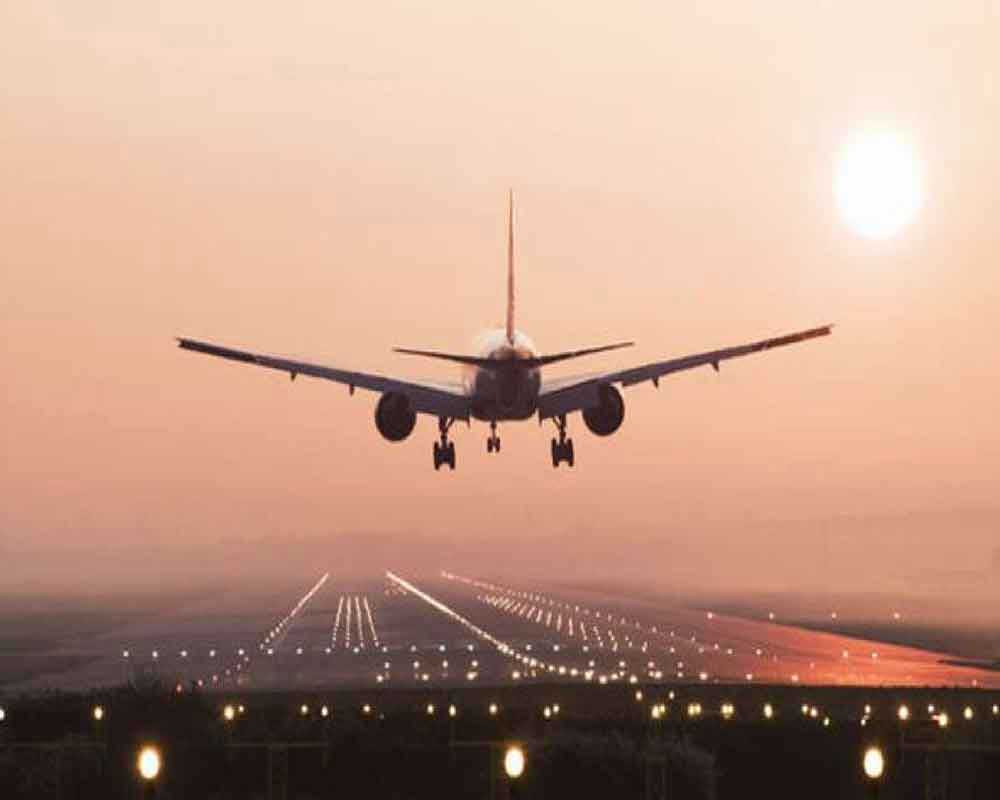
Blowing bubbles
by Opinion Express / 18 July 2020Are ‘air bubbles’ between nations a way of getting international passenger travel going again?
With India having created “air bubbles” with some countries such as France, the UAE and the US and advanced negotiations on with Germany and other nations, it is heartening to see that international commercial air travel is restarting. An “air bubble” is a form of a bilateral air traffic agreement but one that follows the entry rules set by various nations related to registration and quarantine protocols. In India, for example, travellers from abroad are still mandated to undergo one week’s institutional and a week’s home quarantine. The “air bubbles” also prevent direct “sixth freedom” air traffic, a connecting one. International travellers will not, for example, be able to connect through Dubai or Paris airports while coming to India unless specifically allowed by the Indian Government. However, one wonders how an immigration-free zone such as Europe’s “Schengen” area will be managed. The increased flights will hopefully see better utilisation of air fleets and present airlines an opportunity to make some money. However, if experience from India’s domestic flights resuming operations is any indication, the volume of passengers might be minimal after an initial rush as few people have an urgent non-personal reason to travel this time.
So these “air bubbles” could be a start as it remains to be seen whether commercial air traffic can ever re-emerge from the pandemic. For example, many airlines made significant volumes of connecting air traffic but with restrictions as well as the risk-averse nature of most people to deal with another large airport, how will airlines like Emirates and Singapore Airlines cope? Emirates, for example, has already retired the earliest of its A380 superjumbo aircraft and laid off thousands of employees as the Indian air traffic that sustained that carrier has vanished overnight. Even storied airlines like British Airways have announced that they will retire their entire Boeing 747 fleet, joining Australia’s Qantas and Dutch airline KLM in retiring the “Queen of the Skies.” While airlines highlight how safe travel onboard is, drastic reductions in service, thanks to the pandemic, and the lack of passenger confidence have made certain that many of them will not re-emerge from the crisis. Bubbles or not, the aviation industry itself sits on a precarious bubble.
(Courtesy: The Pioneer)
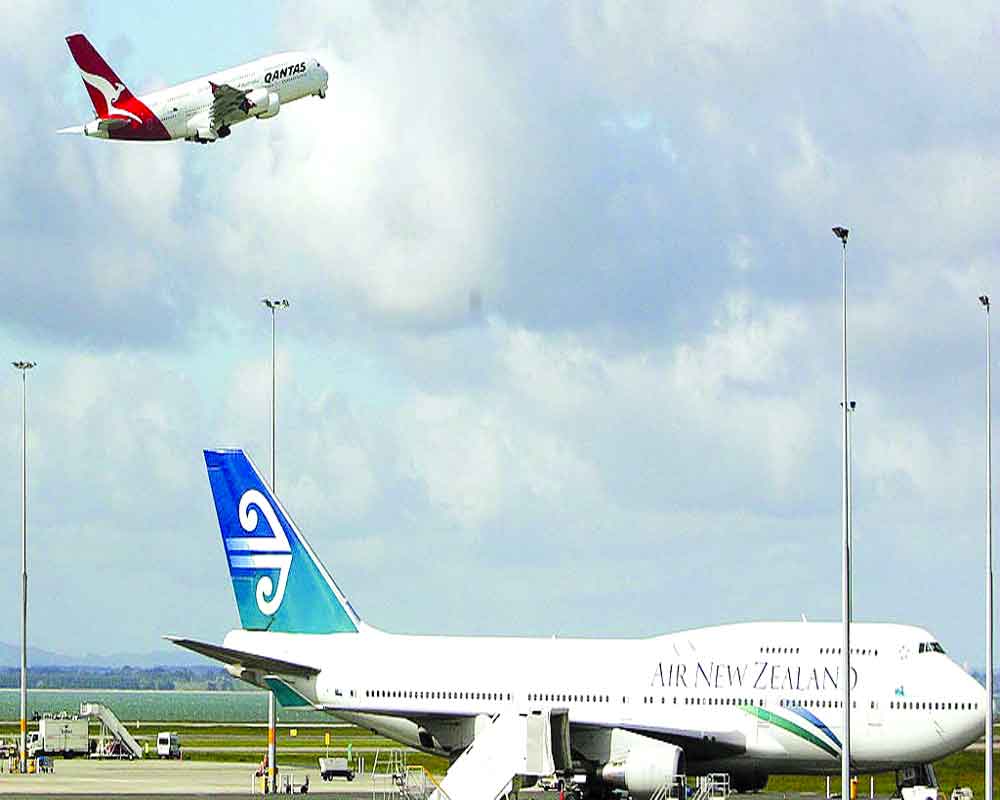
Bubble of hope
by Opinion Express / 06 May 2020As the world grapples with the Corona pandemic, travel bubbles may be the way ahead to open international tourism
At a time when tourism, which was considered to be a growth engine of the new economy and a defining lifestyle statement, has reached a dead end courtesy the Coronavirus, here’s some solace from at least from one corner of the world. Ongoing talks between New Zealand and Australia to chalk out a plan to create a “travel bubble,” which would allow citizens of both nations to cross the 2,000-kilometre sea line, offer some hopes for recovery for this industry. Maybe create a template for the rest of the world. Agreed, it may take some time for tourists to start moving freely but a designated guided tour between two or microdots of “safe” countries may yet rescue a sector from dying. As the two countries work on the modalities to create the bubble, it must not be forgotten that this is a hard choice they have had to make. However, both nations have been way ahead in containing the pandemic — registering only one per cent growth in new cases — which is why they have been lucky enough to consider the option to open each other’s borders for their citizens. Besides, the two nations share the closest bilateral relationships in the world. With easier visa agreements, the flow of people, work-related or for pleasure, had been pretty smooth before all hell broke due to the spread of the pandemic. Heavily dependent as they remain on each other, with Australians making up almost 40 per cent of international arrivals to New Zealand and the latter making up for around 15 per cent of the former’s international visitors, they might just get a micro-economy going.
With Australia looking to double the pace of economic growth next year and a somewhat diluted form of recession in New Zealand, this would be a symbiotic relationship that has to be closely monitored in terms of disease control protocols. Moving too fast would mean not only a second wave of COVID-19 cases but a challenge laden with potential risks of new infections. With another country being involved in the mix, contact tracing would be even more difficult. From following stricter health protocols to tightening up airport rules and quarantine checks, a lot would be needed to restore confidence of travellers. Technology would have to be deployed to intensify the screening and tracking the movement of the each tourist. A bubble indeed that cannot be allowed to burst. India, too, over the course of time, can experiment with domestic bubbles between “safe, contiguous” territories.
(Courtesy: The Pioneer)
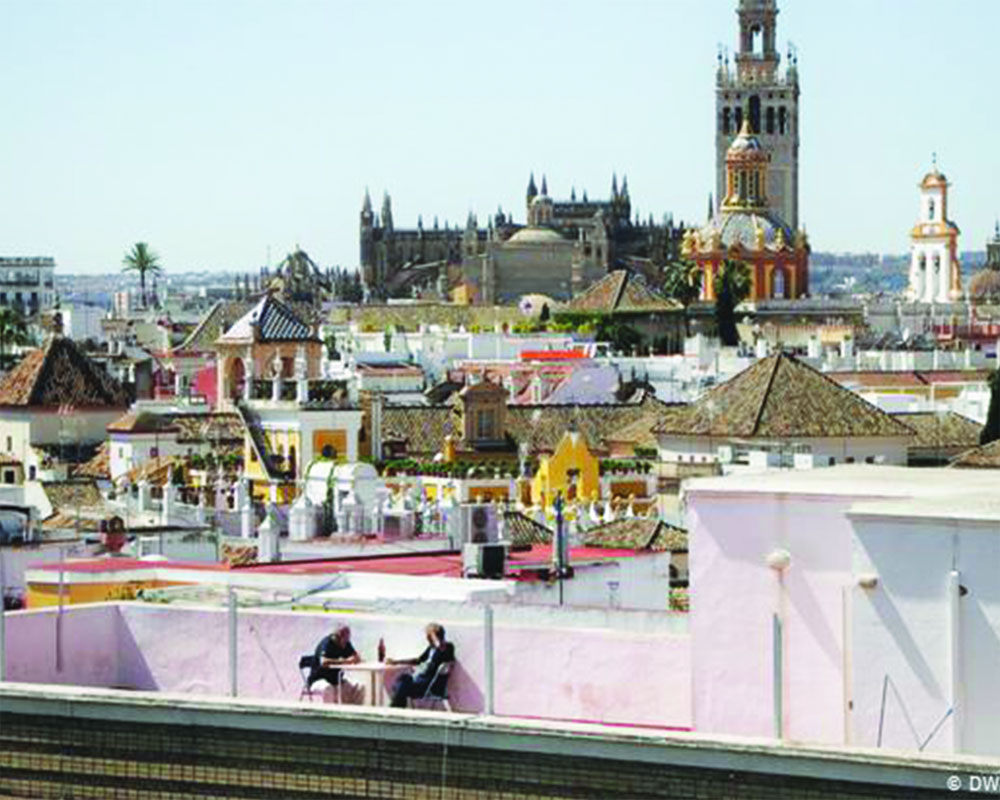
Sun will shine, again
by Ashok K Mehta / 22 April 2020With more than 20,000 deaths, Spain, which used to be a tourism hotspot, has turned into a contagion hotbed. But hopes are high that it will soon be able to return to normalcy
In Europe, Spain, with a population of 46 million, is closely following the footsteps of Italy in terms of COVID-19 fatalities. It has suffered more deaths per million inhabitants than any other nation with the death toll crossing 20,000 on April 17. There were more than 9,000 new cases on March 31 and 950 deaths on April 2, the biggest daily death figure. These horrific statistics were provided by the Spanish Government’s top scientific advisor on the pandemic, Fernando Simon. Immunologist Alexander Edgar of the University of Reading said, “A lot of the spread had happened before people realised. Most of them assumed that the problem was elsewhere — Wuhan, which was shut off since January.”
This is analogous with Myanmar’s Health Minister saying in Yangon when it claimed zero COVID-19 that “Hubei was 1,200 miles away from the country though it shares a 1,900-mile border with China.” The three main reasons for the high fatality rate in Spain are the country’s slow response; demography and social behaviour; and low testing capacity. This, despite the country having an excellent healthcare system and not to forget the high-life expectancy in Europe due to its Mediterranean diet. But Spain’s ageing population has been shrinking since 2010 due to recession and migration. More people died in 2018 than were being born here and the pandemic started with the elderly contracting it first, like in Italy where social and cultural behaviour matches that of Spain’s.
On a holiday in Spain months before the outbreak of the Wuhan virus, one had heard of the Spanish flu and influenza pandemic that occurred in 1918-1919 during and after World War I, where one in three human beings were infected and around 17 million to 100 million perished across the world. Calling the flu Spanish is a misnomer: It started in Kansas at Fort Riley when the US was preparing to join the war. Others say it started in the congested trenches of Europe, which at that time were filled with young men and later American soldiers. The Spanish flu was really bad as it came in three waves and reached across the world, including Africa and Australia. Medicine, too, was not extensively developed.
The holiday was memorable. Ethiopian Airlines describes Madrid as the city of great monuments. I would add museums and Plaza Mayor to that list. It has just one cathedral and that, too, constructed in the mid-20th century as the Archbishop of Toledo, the old capital of Spain, would not allow it. Madrid sits astride Rio Manzanares with gentle slopes on both sides of the river connecting the two parts of the capital with a blend of ancient and ultra-modern bridges, marvels of architecture reflecting the extraordinary vision of the Spanish rulers building six-lane bridges in 16th century.
On both sides of the river are walkways, partly covering the Madrid marathon cycling tracks. Spaniards ride bicycles whenever and wherever they can. September is a great time to arrive in Madrid’s new and a design wonder airport where immigration officials took just four seconds to stamp my congested passport. But immigration rules will change now.
Madrid has one palace, one cathedral, more than 50 museums, 46 art galleries and 23 concert venues. All of these were renovated for the 400th anniversary of the Plaza Mayor, which records Madrid’s heartbeat with its ancient square and adjoining food and wine markets.
I am not a connoisseur of wine but Spanish rioja is excellent at 3 to 4 euro per bottle. In Madrid, in the grocery shops, I could find only Spanish wine. A bottle a day is bound to keep spirits high, ideally with fresh strawberries, ham and cherries. Bar Nakama, a hole in the wall, is run by the solitary English-speaking barman Robert. Nakama, he explained, meant “friend” in Japanese, though we never saw a Japanese in here. In his bar one could buy a glass of reasonable wine for 2 euro, which is accompanied by plentiful snacks and gratis. Excellent espresso coffee and Spanish beer were available, too.
All roadside cafes charge 1 to 2 euro extra for service except the chain 100Mantidelos, where self service rules, which is pronto. Madrid is not expensive like London and Paris or even Brussels and Amsterdam. Though museums charge an average of 7 to 10 euros, many are free between 7 and 9 on some days and gratis all times for EU and Latin American nationals.
September is also the month for art, music and theatre festivals organised by DCode, supplemented by exhibitions and concerts by Arte Madrid and Appertura. World class bands, including Team Gallagher and Oasis, Broadway musicals, English theatre artistes, flamenco dancers, singers and guitarists, all perform here. Bull fighting happens only between April and June but Spain stands divided on whether the sport should stay or be banned altogether. Madrid boasts of a three Michelin-star restaurant Cairella Bistro that has a Valencian chef. The most famous landmark is that of a male Spaniard, leaning on a balustrade near Calle Allemedine and Calle Mayor June. Most tourists mistake the bronze life-size statue for real and brush past it whispering inanities and rubbing its bottom for good luck. They call him the good bum. Toledo is a world model tourist attraction. On a Sunday, it was bursting with human kind with tour guide-led columns crawling like ants. It takes an hour to reach the old capital of Spain, which is surrounded on three sides by River Tagus. From the moment one alights the bus, one is elevated to Plaza de Zocodover on a series of escalators rising 500 feet to reach the panoramic heights of the old city famed for a blend of three cultures.
Over a period of time, Christians, Moors and Jews lived together peacefully (not quite like today in West Bank in Jerusalem). A 10th century mosque, preserved for two centuries before it was turned into a chapel, is in good shape. Toledo’s cathedral, built in the 13th century contains El Grecho masterpieces of de-robing Christ. The bell in the tower weighing 30,000 kilos apparently rang only once as it caused a minor earthquake in which a 90-metre high clock had one of its needles disappear. A 14th century synagogue is well preserved in the Jewish quarter, next to El Grecho’s recreated house. Toledo is an experience of a lifetime. Equip yourself with a tourist map, the Es Madrid magazine and mucho gracias for your travel whenever you can plan one in the future.
Fast forward, Prime Minister Pedro Sanchez said on Monday that current measures of lockdown will extend beyond April 25 and schools will be closed till September. Like elsewhere in Europe, he has announced a sector by sector opening of the economy. Sunday saw the smallest one-day death toll, 410, since March 22, which means the curve is bending.
(Writer: Ashok K Mehta; Courtesy: The Pioneer)
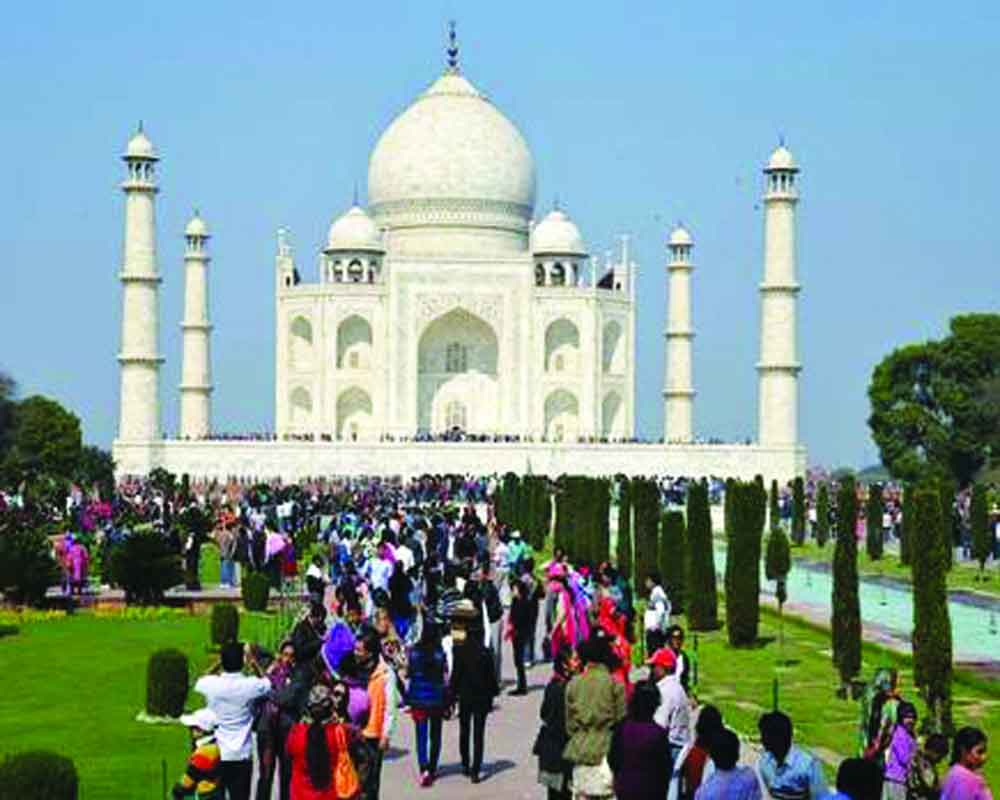
No more welcome
by Opinion Express / 31 December 2019Following internet shutdowns, the tourism sector is the latest victim of the Government’s high-handedness
The Government may be consistently playing down the countrywide protests over the Citizenship Amendment Act (CAA) and the National Register of Citizens (NRC) as a conspiracy of intellectuals to jeopardise its legitimate existence. But with the protests showing no signs of abating — they have now turned into a people’s movement over exclusionary and discriminatory policies that breed hatred and disunity — the clampdown on freedom of expression has been severe. So harsh that internet and mobile network shutdowns have indefinitely become the order of the day. This has elicited strong admonitions and travel advisories against India, impacting our tourism business severely. For example, tour operators in Agra, the home of Taj Mahal, have unofficially reported a loss of about 50 per cent revenue during the holiday season. Nowhere has the clampdown been as draconian as it has been in Uttar Pradesh with over 19 people killed and more than 1,100 arrests. The visitors’ count for December has been the most dismal. A paltry 4.5 lakh tourists arrived at Agra’s Taj Mahal over the new year weekend, which is down from seven lakh the same month, last year. Tourists from the US, the UK, China, France and Japan are understandably cautious after reports emerged of foreign students being deported for extending moral support to protesters. Internet cafes, a favourite among young travellers to keep folks connected to them back home, are running dry.
As the tourists have been dissuaded from travelling to India — in part because the message from New Delhi has been that it will not buckle down and, instead, has sharpened its attack on anti-CAA protesters and tightened the noose of police action — their numbers fell well before November, when the crucial Ayodhya verdict was to be announced by the Supreme Court. The month, which saw a footfall of 6.7 lakh tourists last year, saw only 5.4 lakh tourists this year. Agra alone attracts over 6.5 million tourists every year, generating nearly $14 million annually from entrance fees. Similar is the story elsewhere. Overall, the hospitality sector has been hit. Assam has already faced a loss of Rs 400 crore. Mysuru saw a 20 per cent dip in tourism. Revenues for many hotels, tour operators and guides have plunged with many tourists, both domestic and foreign, either cancelling their trips or cutting them short. This is understandable. Protests are now dragging on into the second month and have shown little signs of abating even as the Government has issued “clarifications.” There are plenty of signs of matters turning more violent as both police and marchers up the ante. The larger question, however, is whether the tourism sector will be able to absorb the damage once normalcy returns. For an industry, which the Government pegged as a growth driver even in a slowing economy, this is a bad sign. In this business, perception matters and the atithi is certainly not feeling welcome anymore.
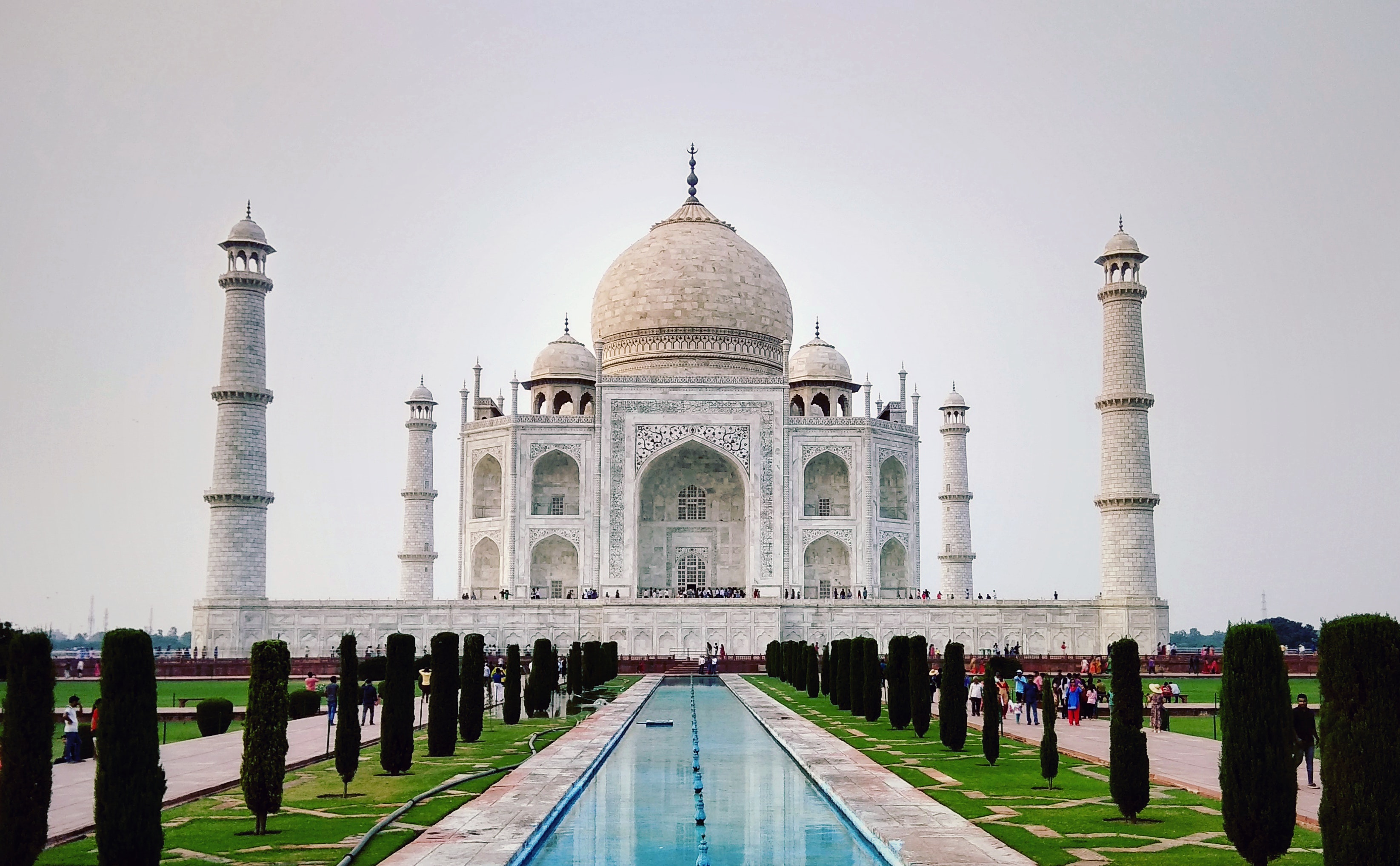
Tourism potential still untapped
by Vineet Taing / 10 December 2019For a sustained and all-round economic growth, there is need for an integrated sectoral approach to ensure the ease of doing business
Discussions on the performance of the Indian economy have been taking place for months now. The many years and cycles that our economy has been through show that in order to grow at a healthy pace and sustain that growth year after year, no sector can operate in isolation. From being recognised as a predominantly agrarian economy in its early days, we have seen various sectors develop, contribute and help grow its overall size.
The Pahle India Foundation’s (PIF) report titled: An Integrated Value Chain Approach to Ease of Doing Business: A Case Study of Sugar, Alcohol Beverages and Tourism Sector points towards the synergy between the three sectors. This has remained largely unexploited. States like Kerala and Bihar, which have an immense potential for tourism, have been battling broader policy issues like the ban on alcohol. Kerala quickly realised the effects of prohibition and reversed it two years after it was imposed in 2015. Why such a ban is detrimental to the success of the tourism sector is self-explanatory, especially when one considers foreign tourists visiting India. Consider this; Bihar lost over Rs 3,000 crore in excise revenues in a year after alcohol ban in 2016; tourism is down too as the State has seen a decline in the number of domestic and international arrivals. According to data from the State tourism department, the number of domestic tourists in Bihar was approximately 61.52 lakh in 2015, which in 2016 decreased to 42.84 lakh. At present, Gujarat, Nagaland and the Union Territory of Lakshadweep also practise prohibition.
Sadly, reforms on the Ease of Doing Business (EoDB) front have been very generic so far and there are many challenges which need to be overcome for the tourism industry to realise its potential. For instance, among the many licences that are required today to start a hotel, one is for washing clothes. There are close to 70 such licence requirements which are a burden on the industry. The estimate made in the report that the Indian hotel industry has a potential to grow to $424 billion by 2027 points to a clear need to rationalise policies across sectors in order to harness it.
If tourism is to be made business-friendly, the Government needs to introduce sector-specific reforms. This is necessary as tourism as a sector has strong interlinkages with other sectors and industries such as food services, hospitality, retail, travel, real estate and others. Tourism as a sector comes with direct, indirect and induced benefits and allied economies play a role for the growth of tourism to sustain such benefits. There is a need to bring down the incoherence in the status of tourism and its regulations in the country. In Schedule 7 of Article 246, tourism is not listed under the Concurrent, Union or State list. Each State has its dedicated tourism board which is responsible for overlooking its promotion and development.
From the perspective of EoDB, recognising the need to upgrade tourism infrastructure in India, the Central Government has proposed an outlay of Rs 152 billion for the sector. From an EoDB perspective, the States have a bigger role than the Centre.
As the report points out, the tourism sector today faces various challenges not just with respect to the value chain but also in services and infrastructure. Some of these include an ineffective single window clearance and extended time periods for clearances and licences. To make things simpler we need to further enhance the efficacy and implementation of the Government’s skill development programme and it is here that stakeholders would have to support the efforts of the Government.
For an industry which is the seventh-largest in the world, with respect to its contribution to the Gross Domestic Product (GDP) of the country, the World Travel and Tourism Council (WTTC) report of 2018, has pegged the tourism sector to grow to Rs 29,680 billion by 2027. At present it accounts for Rs 16,380 billion, which is 9.4 per cent of India’s GDP.
For the industry to achieve its true potential, a conducive reforms programme will have to be implemented on the lines of what the report is suggesting. The PIF report makes several critical recommendations. Ideas like creation of investor and entrepreneur-interactive platforms (competitions, fairs, summits) in small cities are the need of the hour. A quick and transparent licencing process is another important need and enforcing stricter timelines a necessity. Enhancing EoDB is a challenge but policy initiatives in the right direction are a must, specially considering the tightrope walk that the Government is doing for ensuring that the economy remains on track and moves in the right direction. An integrated approach to EoDB is the first step in that direction.
(Writer: Vineet Taing; Courtesy: The Pioneer)
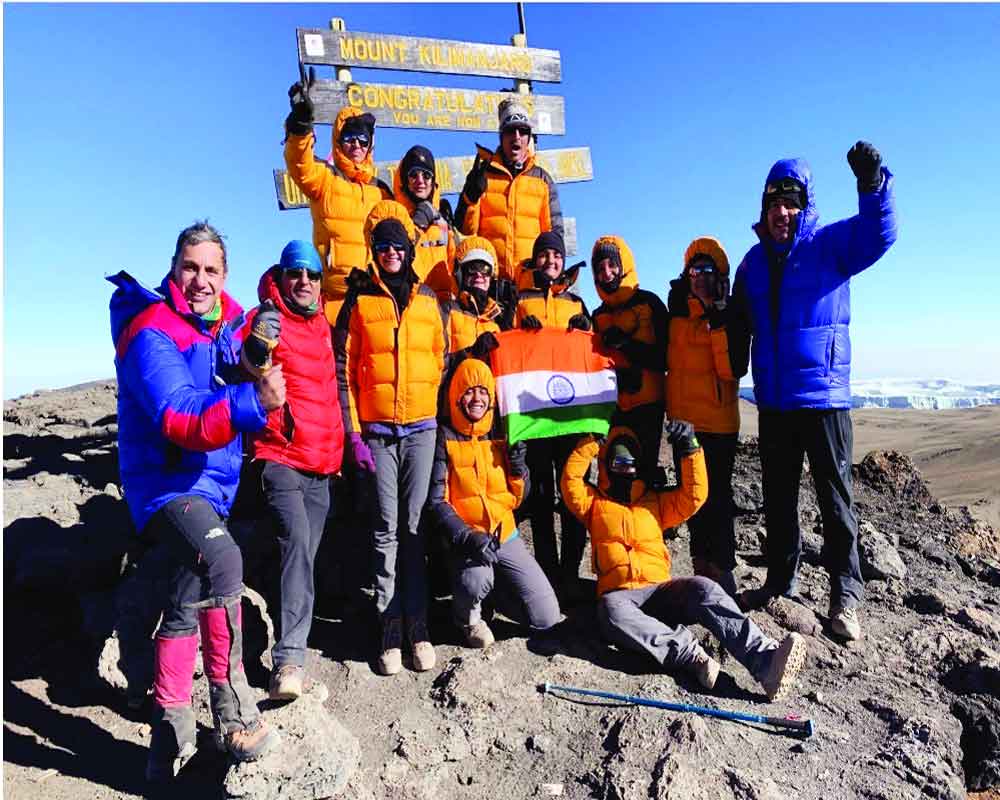
Magnificent Seven
by Musba Hashmi / 01 September 2019There is an adage, where there is a will, there is a way. It stands true for seven girls who decided to take the road less travelled. MUSBA HASHMI catches up with the youngest trekkers to scale Mt Kilimanjaro to bring you their success story
On August 7, 2019 while it was a normal day for everyone, seven young girls decided to set off on a journey that will be remembered by all for years to come. These girls are the talk of the town and for all the right reasons. They have scripted history by becoming the youngest trekkers.
The girls aged between 15 and 18 years are fearless, focused and had only one thing in mind — to make their country, parents and school proud. They embarked on this expedition along with two faculty members — Priya Dhillon and Major Priya Jhingan. The expedition was led by Ajeet Bajaj, director, Snow Leopard Adventure a Padmashree Awardee who scaled Mt Everest along with his daughter, Deeya Bajaj, last year.
The expedition was conducted by The Lawrence School, Sanawar and no surprise that it is a success. Mt Kilimanjaro is Africa’s highest peak with the summit located at 5,895 meters above sea level. It is also the world’s highest free standing mountain. The expedition was sponsored by Hero Cycles, who later felicitated the girls after their return.
The adventure bug bit these girls early. And scaling Mt Kilimanjaro is just the beginning. They have miles to go.
Seventeen-year-old Class XII student, Megan Bhagirath, recalls the journey as one of her best things that has happened in her life.
“It is very unlikely for parents to send their children on such adventures when it is about Class XII Boards. But, I am very fortunate to have got such supportive parents who motivated me to go on this expedition. Not even for a moment did they think that this would affect my studies in any way. My father just walked up to me and asked if I would manage both. I say I would and he replied then go. I can say that this expedition was one of the best things that happened in my life,” she says.
But not all was smooth and easy. Bhagirath had her moments when she thought of dropping the plan. She was anxious if she would live up to the expectations of her parents and teachers. It affected her — what if not everything turn out to be good. That was when, her father became her strength.
“My father told me that I will have this fear until I will set off on the journey. But, I should stood strong. I can’t quit. He told me you will never know what is going to happen until you are off to the journey. So just go. Then there was no stopping,” she tells you and adds she has keen interest in sports. The reason being her school.
“Sports is a compulsory subject for everyone. Each one of us have to enroll in a sport of our choice. That was the reason I was always interested in sports. My brother is a big sport fanatic as well,” the 17-year-old says whose favourite sport is hockey.
One can only imagine how is it like to look up the mountain with a vision of scaling it. When you are on the top and everything else seems so tiny, one can’t do anything but admire the Mother Nature.
Bhagirath’s experience of the expedition, she says, was full of people.
“There were so many people who had the similar thing in mind — to scale it. We all were strangers but up on the mountain they all felt so familiar. The Africans are very hospitable, they are very sweet. When you are up there everybody wants to connect. There are people all around you. Even the most introverts turn into extroverts on the mountains because at the end, people is all what you have up there,” she says and adds that imagine you are on the mountain for seven days with no Internet, no family, just the mountain and the cold air.
“It is very peaceful. There are no tensions. No stress of what is happening in school or what will happen later on. It is like purification of the soul. It is beautiful. One can definitely take a sigh of relief on the mountains,” she tells you and says that their training started in February from Rishikesh where the girls had to walk for eight hours straight with not more than a 10 minutes break after every two hours.
“Rishikesh training taught us endurance. It gave us that belief that you will get there (to the top) just keep going. Then we trained in Ladakh. It got us the feeling of training on a high altitude with limited oxygen and low resources. It taught us to manage time and our mental abilities,” she tells you.
Though, their initial training started from school. It is compulsory for students to go running for an hour-and-a-half in the morning and then in the evening. They also need to go for hiking daily. But, it was not easy. Time management was a problem because of academics. They overcame this in Rishikesh and Ladakh, where their sole focus was on training.
The ones who are willing to go for such expeditions have to keep in mind that there is a particular diet they have to follow. No junk or fried food, lots of carbohydrates, protein and collosal amount of water is a must.
Bhagirath tells you that the moment they reached the top, all of them felt an adrenaline rush. It was a proud moment. “It felt like all our efforts paid off. After a 11-day journey we were there where we wanted to be. It gave us immense pleasure and all the other things seems very small then. It was 11 am when we reached the Summit and we couldn’t help but smile all through our return,” she recalls with yet another smile on her face.
There are still many parents who are not willing to send their daughters or even sons on such adventures. Bhagirath has a say on that. “To everybody out there, there is so much to the world than just few boundaries that we live in. There is a lot to explore. It is not like students have to earn a well-paid job to spend a good life. They should do what they love. If we can do this in such a small time, then they can definitely do much more,” she says.
Unlike Bhagirath, who is a sports lover, a 15-year-old Avanti Aggarwal the youngest among the seven girls was never into sports.
“I am in Class XI student. I was always more inclined towards academics. I didn’t do well in sports and it didn’t interest me. One day, when our faculty informed us about the expedition, I was very apprehensive about it. I had to prepare for my Boards. I decided not to give my name for it. Then, my parents encouraged me to give it a try. So I did. And it turned out to be the best experience of my life,” Aggarwal tells you.
But, sometimes only motivation is not what helps you in the long run. It is about training too. And Aggarwal had to face a lot of difficulties because she missed the Rishikesh training and all the others had an edge over her. “I missed the Rishikesh training because I enrolled into the activity very late. I joined the group in Ladakh. So everyone was apprehensive whether I would be able to continue or not. One day, we all went for a high-altitude check and I did face a lot of difficulties in it. It made me lose confidence but then the entire team supported me and I pushed myself to do that,” she tells you.
There are always perks of being the youngest. So was the case with Aggarwal.
“In between I fell ill. I had mild symptoms of acute mountain sickness. I thought it’s time for me to go back home. Because I didn’t want anyone to feel like one person didn’t anything and all the other did neither I wanted any one to stay back with me. But, all my seniors in the group and my faculty motivated me and took care of me. They were very generous with me. Fortunately, I recovered fast and accompanied them on the expedition. Their support and love helped me get back to normal. Since, I am the youngest they all treat me with special care. It gave me the confidence to not surrender,” she says.
Aggarwal recalls that on the summit night when they started from Kibo to the Gilman’s point which is the highest one, it was the toughest part of the expedition. “The slope was very steep with an inclination of 75° and the temperature was about -20° Celsius. As we were walking there were boulders all through our way. Every time we thought that we have made it to the top, we found out that it was the boulders and so much more is still left. Everyone was asking us to take heart, that Gilman’s point is not too far. It became dark and all we could see was the team that was ahead of us because of their flashing head lights. The guide told us that that was the Gilman’s point but they were also moving ahead and so were we. Every time we thought we have reached, we were disappointed. It took us seven hours to reach there from Kibo,” she tells you.
Though it did disappoint the team a bit but no one ever felt like quitting. They all knew that they had to reach the top.
“It was very cold. Everyone was helping each other. Everyone was motivated and motivating others too. We all were energetic despite the long walk. All we had on our minds was to reach the top. That thought kept us going,” she adds.
Any journey is incomplete without a mentor. Everyone needs a guru who can show the path to success. So was the case here. The guru or the leader of the expedition was — Ajeet Bajaj. He says that it was a wonderful experience to go on the expedition with the seven girls whom he now call his daughters — the daughters that listen to him. (laughs)
Bajaj says that it was the highlight of his career. The thing to look out for is that this expedition was the first one for the girls, who scripted history at one go.
“These girls made the country proud. The great resilience that they showed on the mountains was appreciable. A thing to learn from them is their spirit and the never give in attitude. This is a message for all that given an opportunity there is nothing that our girls can’t achieve. They just the need the push and support to get going,” he says.
One thing that Bajaj abides by is that on the mountains one has to proceed with a lot of respect for Mother Nature. He has to be very slow and steady. Going with the mindset of conquering mountains is a big ‘no-no’. Humans can never do that.
Not only Bajaj but both the faculty members, Dhillon and Major Jhingan were as supportive as him. They also highlight the need of sports education in India and opines that sports should be given equal importance as academics. It is important for the overall development of the students.
MK Gulia, Head of Sports and Outdoor Pursuit, The Lawrence School who selected the team of the girls and faculties says that they didn’t select the girls on the basis of physical strength but their will power.
“We can work upon the physical strength and fitness. It can be build with training. The key is the will power, mental strength and a passion to go for trekking. This is how we selected these seven girls out of the others 15-20 girls who gave their names for this,” he tells you and adds that he felt disappointed when a number of girls withdrew their names because their family didn’t allow them to go on the expedition.
He tells you that it’s high time when we stop asking the Government to focus on sports. The Government is doing its part. It is the responsibility of the society, the schools and the parents to identify the importance of sports and let their child free to do what he wants.
“These seven girls are an example for others who believe that sports will not take them anywhere. The parents should understand this and should encourage their children for participating in sports. When the young generation scale such highs, it is not only a proud moment for their parents and the school but for the whole country. Many people took inspiration from them,” he says and adds that the school will definitely plan more such expeditions and will encourage the youth to scale new highs.
Writer: Musba Hashmi
Courtesy: The Pioneer
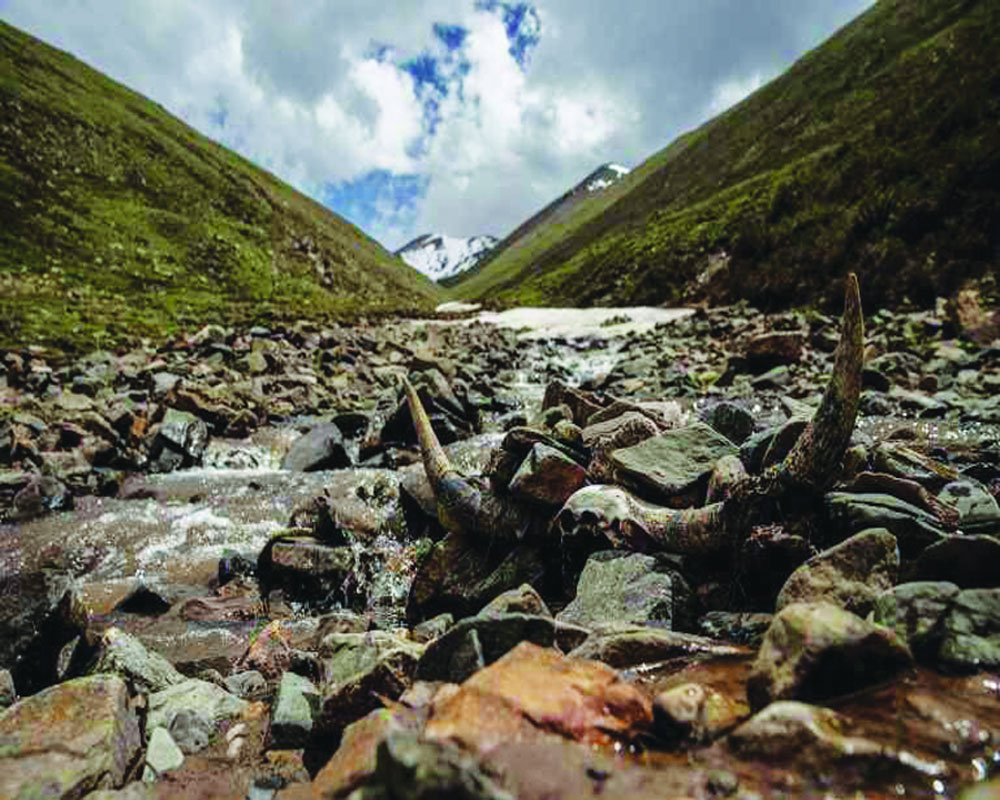
Demand of Environment Grant
by Opinion Express / 31 July 2019The Himalayan States have demanded that the Centre give them an environment grant, not really an unfair demand
India’s extremely fertile plains are nourished with water and nutrients from its mountains, like a bloodstream disseminates life force across the human body. Without the Himalayas, there wouldn’t be glaciers or the resultant rivers to water our vast plains. There wouldn’t be rains if the peaks hadn’t blocked the monsoon clouds and trapped them in the Valleys. It is important, therefore, for India as a whole to treat the Himalayas and the ecology of these mountains carefully to ensure that civilisational life as we know it can continue as it has for five millennia. Ergo, it is not imprudent for the Himalayan states to demand a ‘Green Bonus’ so that they can preserve the ecology of the mountains and plan for sustainable development.
We have seen what rampant, unplanned development in the mountains can do. Shimla, the erstwhile colonial summer capital of this country, ran out of water last summer. Rampant development has seen the destruction of thousands of acres of primeval forests and wanton construction activity continues with nary a concern for the future or resource management. Satellite imagery shows that the rapid retreat of large Himalayan glaciers, through a combination of both local and global environmental contagion, is grave indeed. It is only fair then that the citizens in the plains do their bit to contribute for the health of the mountains and the economy of the states because in the long run, they are protecting themselves and their progeny. There has to be a stop on the race to develop huge projects and even too much industry in the mountains, but the population of the mountain states needs some sort of compensation for this denial, which seems like a small price to pay. Without any financial incentive, unrestricted development will continue, because the fear of penalties will be overridden by economic interests. We need to incentivise and not just penalise. Ten of India’s 11 hill States met as part of a recently concluded campaign and made this demand to the Finance Minister. They also advocated for a separate Central ministry to explore concerns specific to them and for better efficacy of ecological programmes targetted for the mountains. This is something that should be explored, maybe not as a ministry but definitely as a department of the government that looks at some of these critical issues. In the end, these would not just impact residents of these States but every other Indian. The Himalayas might be one of the world’s youngest mountain ranges but they have suffered from the ravages of civilisation. This must be controlled now, if we, as a nation, are to continue.
Writer & Courtesy: The Pioneer
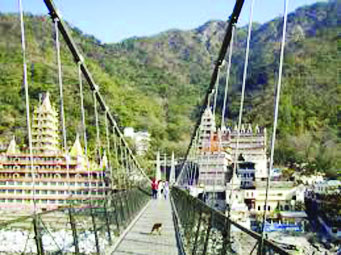
Pressure of over-tourism in the Himalayas
by Opinion Express / 15 July 2019The closure of the Lakshman jhula is another warning sign on the pressures of over-tourism in the Himalayas
Perhaps a great way to rewind family histories in India would be to turn the pages of a photo album and find generations frozen forever on the Lakshman jhula bridge in Rishikesh, all the way from sepia to instagram. Even Bollywood has relied on it as an eternal prop through the ages. That’s the span of the iconic suspension bridge, far more everlasting than the 137 m gap it closed on the Ganga and helped people transit from the Tehri to the Pauri side. And though it is being shut after years of gross overuse, for Indians it will never be a bridge too far. When it was first built in 1929, it served as a jeepable road for British India to transport men and materials and facilitate administration and connectivity in the hill states. But for locals, who believe that Lakshman crossed the river here on a rope way he made with Lord Ram and has probably the only temple in his name, it is about a gift from the Gods. Over time, it, along with Ram jhula, came the shortest and only transit corridor between both banks of the Ganga, ferrying everything from cows, buffaloes, bikes, jeeps and cars to locals, pilgrims, vendors and visitors. With more time, an entire economy grew around it, be it of the spiritual trail linking a group of temples, souvenir shops and food outlets and the quaint colonnades radiating from it. It also became Rishikesh’s best vantage point to watch the mystic river flow, the clear green waters full of fish on a sparkling day and a dark ripple catching flecks of a starlit night sky. With ever-increasing footfalls, the bridge had far exceeded its carrying capacity a long time ago. But its lifeline value far exceeded structural concerns. So when its sagging weight seemed to tilt the poles, the authorities rightfully decided to close it than risk a human catastrophe. In fact, the vintage Ram jhula will also be at risk as some traffic will tend to be diverted here. Authorities have promised another bridge but it will take some coming. They say Lakshman jhula itself was built because an earlier bridge was washed away in the floods. So one hopes an improved version, with latest technology and factoring in today’s demands better, continues a much-trusted legacy. Meanwhile, locals will have to depend on the boat crossings that pose a challenge to the waters and fish. Besides the waters are not safe during floods and the monsoon.
The fate of Lakshman jhula is a warning sign of the over-exploitation and over-tourism posing a serious challenge to the hill economy. And places like Rishikesh, which serve as a base town and a resource hub for both adventure and pilgrimage trails, have indeed come under tremendous pressure in terms of providing basic services like adequate hotel rooms, water and electricity. The Uttarakhand High Court had to ban all water sports and paragliding camps in the state, citing water pollution, ecological damage, and garbage piling up on beaches and hills, mostly around Rishikesh. River rafting in Uttarakhand is hugely popular, especially with weekend travellers from Delhi, and generates sizeable business. Thailand and the Philippines are already shutting down over-run tourist sites at the cost of the exchequer and laying new guidelines to open them once they recover. There is an urgent need for eco-friendly guidelines and rationed permits on the basis of an impact assessment report until 2050. Except for the Amarnath yatra, there are no unified codes for the Char Dham yatra yet. Because without sustainable and equitable tourism, the Himalayas may turn into a wasted paradise
Courtesy: Editorial-The Pioneer

Climate Change:Northern Hemisphere Experiencing Heat waves
by Opinion Express / 08 July 2019As record heat waves strike across the northern hemisphere this summer, climate change seems beyond our control
The northernmost US state of Alaska is not a place where you would expect temperatures to exceed 30 degrees celsius or people to slap on sunscreen and sit under parasols. But it is happening so this year despite large parts of its geographical territory being above the Arctic Circle. This would be an odd occurrence if it happened in isolation but it is in continuity with warming trends of the last few years linked partly to a decline in sea ice and Arctic Ocean warming. Permafrost or the frozen ground that makes up about 85 per cent of Alaska, is thawing and affecting life as we know it, from building foundations of liveable structures, saving wildlife habitats and growing Tundra berries. Last year, puffins died in huge numbers because their prey fish had migrated away from warmer waters. Concurrently, Europe is suffering some of the highest temperatures in living memory with parts of France and Spain seeing temperatures more akin to an Indian summer. Scientists have, therefore, concluded that such persistent highs were not just about a micro-climate zone but had indeed been brought about by climate change. Europe reported the hottest June since 1880, according to the EU’s Copernicus Climate Change Service. The temperature was 3oC above the June average a century ago. And because heat waves now have a repetitive pattern of occurrence, there is no doubt that global heating, caused by carbon emissions from burning fossil fuels and other human activities, is manifesting itself sooner than expected.
Some are saying that the warm draft from the Indian sub-continent is the reason behind the heat wave in continental Europe. With the delays in the monsoon rains and their lower than expected volumes this time, weather patterns are worrying not just climate scientists but even the general public and governments. We may be staring at a new wave of climate migrations, refugees and deaths of vulnerable people unused to temperature shocks. The toll on human health is already visible with estimates that thousands of elderly and infirm people across Europe will succumb to high heat. In India, we cannot even contemplate the results of a poor monsoon and resultant drought, desertification and starvation in outlier pockets. Warmer waters mean rising sea levels which will threaten hundreds of millions of people staying in low-level areas, both in India and in neighbouring countries. So we have to start preparing for the worst and have an original green template than be ostriches burying our heads in the sand. India is doing its utmost to ensure equitable and sustainable development that will allow citizens to grow economically and consume more energy while harming the planet lesser. Water conservation should be in mission mode, too.
Writer & Courtesy: The Pioneer
FREE Download
OPINION EXPRESS MAGAZINE
Offer of the Month





